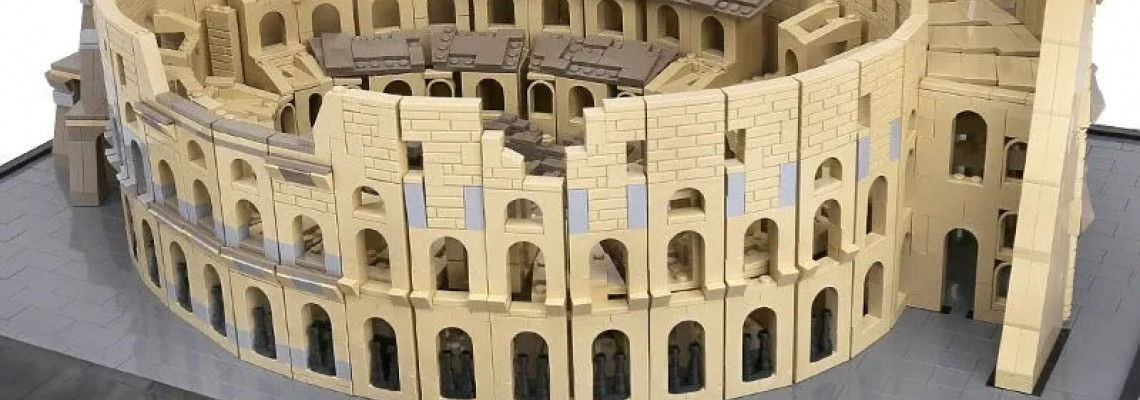Tips for dusting/cleaning your LEGO MOC layout

Tips for dusting/cleaning your LEGO MOC layout
Introduction
People love showing off and taking care of their LEGO models, especially when they are on display for everyone to see. However, dust and filth will inevitably accumulate on them, making the bricks appear uninteresting and unimpressive. Don't worry; there are methods for cleaning LEGO models without causing any harm. Utilizing the proper cleaning methods and supplies is crucial to prevent the models from being harmed during the cleaning process. This post will explain how to use a paintbrush or vacuum to dust and clean your LEGO MOC based on this video's functioning demonstration.
Why Use a Paintbrush or Dust Cleaner?
To preserve their beauty and extend their lifespan, cleaning LEGO models can be difficult, particularly if they have delicate parts and detailed designs. The good news is that you only need a vacuum cleaner or paintbrush to clean your LEGO MOC. Using these tools, you may quickly and safely clean your LEGO models without causing any damage. While a vacuum cleaner can assist you in cleaning those difficult-to-reach places, a paintbrush with soft synthetic bristles can readily remove dust and debris between the studs.
A paintbrush is the most straightforward and efficient tool for cleaning LEGO models. However, any brush won't work. An artist-sized paintbrush with soft synthetic bristles is perfect for dusting between LEGO brick nubs. Dust and grime may be readily removed with these brushes without causing any damage or scratches to the brickwork. It's also crucial to remember that the brush's ferrule shouldn't touch the brickwork because this could result in scratches. Dust LEGO models frequently before dust builds up to prevent unintentional harm.
How to Clean Your LEGO MOC with a Paintbrush?
Using a brush to clean your LEGO MOC is a simple and efficient method of removing dust and debris. The steps to follow are as follows:
Step 1: Invest in a paintbrush with supple synthetic hairs. An artist-sized one is possibly the most affordable and superior to those purchased at hardware stores. A range of handle lengths makes reaching into various-sized models easier.
Step 2: Use the paintbrush's bristles to remove dust between your LEGO model's studs while holding it like a pen. Be careful not to scratch the brickwork.
Step 3: Brush off dust and debris as you move around the model. If you apply too much pressure to the brush, the bricks may be damaged.
Step 4: After you've swept off all the dirt and dust, use a vacuum or duster to remove any last bits of loose dust.
Step 5: If you follow this procedure for each of your LEGO models, your LEGO display will quickly appear brand new.
Tips to Keep in Mind While Cleaning with a Paintbrush
While using a paintbrush to clean your LEGO models is a simple and safe method, there are a few things to consider:
Use a brush with soft synthetic bristles at all times. Stiff bristles can scratch bricks.
A paintbrush with a metal ferrule—the metal component that joins the bristles to the handle—should not be used since it may harm the bricks.
When brushing, apply light pressure to prevent brick damage.
The bricks may get damaged if stickers or prints are brushed over.
Brush out dust and grime between the bricks to prevent them from setting and becoming challenging to remove later.
How to Clean Your LEGO MOC with a Dust Cleaner?
A vacuum cleaner is an excellent tool for cleaning LEGO models, especially those with difficult-to-reach places. The steps to follow are as follows:
Step 1: Purchase a vacuum. An electric vacuum, a portable air blower, or a can of compressed air can all be used.
Step 2: To remove dust and debris from hard-to-reach places and between the studs, hold the vacuum cleaner away from the LEGO model and blow gently to prevent breaking the bricks.
Step 3: If you follow these steps for all of your LEGO models, your LEGO display will soon appear brand new.
Things You Should Avoid When Cleaning
Washing with Mixed Solution
LEGO bricks are frequently cleaned with isopropyl alcohol; however, it's crucial to distinguish it from nail polish remover or thinner. Nail polish remover, which takes longer to evaporate, may damage the paint on the bricks. It is advised to carefully wipe the bricks' surface with a cotton swab or soft cloth when using isopropyl alcohol to clean LEGO models.
Washing with Hard Water
If the tap water quality is not examined, air-drying LEGO bricks may result in mineral deposits on the bricks. When air-dried, hard and salty water can leave behind residue. It is advised that the LEGO bricks be cleaned with water and then dried with a microfiber cloth to prevent this.
Cleaning with Whitening Detergent
Ensuring no dust accumulation between the LEGO bricks' studs is crucial. After it sets, it is hard to get rid of without using a damp rug, Swiffer duster, or soft-bristled kitchen scrubber to wipe the bricks. When washing LEGO bricks in the dishwasher, avoid using powdered detergents because the detergent particles can cause harm to the bricks by acting as tiny sandblasters. The same is true for washing machines; while cleaning LEGO bricks, whitening detergents should be avoided.
Cleaning with Magic Erasers
It is not advised to use magic erasers, which are composed of expanded melamine foam similar to sandpaper, to remove dirt from LEGO bricks. Bricks will deteriorate if they are rubbed with 2500-grit rubber. Avoid using soapy water to clean chrome LEGO bricks. Do so only if the chrome is not peeling.
To Sum Up
LEGO models may be kept shiny and brand-new for longer with regular dusting and washing. By adhering to these easy guidelines, you can maintain your LEGO models' best appearance and ensure they remain a source of pleasure and happiness. Please watch this video, which was submitted by a seasoned Lego fan, for further information.